Disclosure: This article contains affiliate links. We may earn a commission from purchases at no extra cost to you, which helps our travel content.
Brisbane wasn't always on Australia's culinary map. When I first visited in the early 2000s while researching coral reef conservation efforts, the city's food scene was, shall we say, functional rather than inspirational. Fast forward two decades, and what a transformation! The Queensland capital has blossomed into a gastronomic destination that rivals its flashier southern siblings Melbourne and Sydney. During my recent long weekend visit—a delightful detour after presenting at an environmental conference in Cairns—I discovered a city whose culinary identity is firmly rooted in its subtropical climate, multicultural influences, and growing commitment to sustainability. From the glistening Brisbane River (or 'Maiwar' as the indigenous Turrbal and Jagera peoples named it) to the hidden laneways of Fortitude Valley, Brisbane's food renaissance reflects both its laid-back Queensland character and sophisticated international outlook. Grab your appetite and join me for a taste of Australia's most underrated food city.
Riverside Dining: Where Scenery Meets Sustainability
The Brisbane River isn't just the geographic heart of the city—it's become the culinary backbone too. Howard Smith Wharves, a once-abandoned industrial area beneath the Story Bridge, exemplifies Brisbane's remarkable transformation. On my first evening, as the sunset painted the sky in shades that reminded me of Nevada's desert dusks, I settled into a riverside table at Greca, a contemporary Greek restaurant where sustainability isn't just a buzzword.
The restaurant's commitment to local sourcing mirrors the environmental principles I've championed throughout my career. Their seafood comes from Queensland waters, often caught that very morning. I savored a whole fish (a coral trout) cooked simply over coals—a preparation that honors both Greek traditions and the quality of the ingredient itself.
Further along the river at South Bank, the former World Expo site has evolved into a cultural and culinary precinct. Here, River Quay Green hosts restaurants with spectacular water views. I particularly enjoyed Popolo, where Italian-inspired share plates come with a side of environmental consciousness. Their heirloom tomato salad—featuring varieties grown specifically for them by a local farmer—transported me back to the community gardens I helped establish in Henderson.
For those seeking a dining experience that combines views, sustainability, and pure indulgence, the insulated water bottle proved invaluable for staying hydrated during my riverside walks between meals. Brisbane's subtropical climate demands regular hydration, and this bottle kept my water cold for hours while eliminating single-use plastic waste.

💡 Pro Tips
- Visit Howard Smith Wharves at sunset for the best combination of views and atmosphere
- Make reservations for riverside restaurants at least a week in advance, especially for weekend dinners
- Many riverside venues offer more affordable lunch menus with the same stunning views
Market Marvels: From Farm to Brisbane Table
If you truly want to understand a city's food culture, visit its markets. As an environmental scientist, I'm always drawn to places where the connection between land and table is most transparent. Jan Powers Farmers Markets, which rotate through different Brisbane locations, offer a window into Southeast Queensland's agricultural bounty.
On Saturday morning, I rose early (jet lag has its advantages) and headed to the Brisbane Powerhouse market. The former power station—now an arts venue—hosts one of the city's best collections of local producers. I chatted with a beekeeper whose understanding of colony dynamics rivaled some of my entomologist colleagues, and sampled macadamia nuts grown in volcanic soils just an hour's drive away.
What struck me most was the prevalence of regenerative farming practices. Several producers proudly explained their carbon sequestration efforts, reminding me that Australia—like my adopted home in Nevada—faces significant climate challenges that innovative agriculture can help address.
For those staying in accommodations with kitchen access, these markets provide everything needed for a locally-sourced feast. I couldn't resist purchasing finger limes (native Australian citrus that contains caviar-like pearls) and Davidson plum jam—unique flavors that capture Queensland's distinctive terroir.
Eat Street Northshore represents a different kind of market experience. This shipping container food market along the river offers over 70 vendors serving global cuisine. The upcycled industrial setting would make any environmentalist smile—it's a perfect example of adaptive reuse. I indulged in everything from authentic Malaysian laksa to woodfired pizza topped with indigenous ingredients. My travel daypack proved perfect for this food adventure, with enough room to store market purchases while remaining comfortable in Brisbane's humidity.

💡 Pro Tips
- Bring your own shopping bags to farmers markets—most vendors are reducing plastic use
- Visit Jan Powers Farmers Markets early (before 9am) for the best selection and to avoid crowds
- Look for the 'Grown in Queensland' signs for truly local produce
Hidden Gems: Brisbane's Laneway Revolution
Brisbane's culinary evolution is perhaps most evident in its laneways and side streets, where innovative chefs are redefining Australian cuisine. As someone who's spent decades exploring cities around the world—often while attending environmental conferences—I've developed a sixth sense for finding these hidden gems.
Fortitude Valley, once Brisbane's red-light district, now hosts some of the city's most exciting dining options. Bakery Lane particularly impressed me with its concentration of small, chef-driven establishments. At Agnes, I experienced a revelation in wood-fired cooking. Every dish—from the simplest bread to complex protein preparations—is touched by flame and smoke. The environmental scientist in me appreciated their zero-electricity kitchen philosophy, while my taste buds marveled at the complexity fire brings to local ingredients.
In Fish Lane, South Brisbane's emerging food precinct, I discovered Gauge—a restaurant defying easy categorization. Their black garlic bread with brown butter has achieved cult status for good reason. The chef's background in environmental science (a kindred spirit!) informs his approach to ingredients, with foraged elements and unusual native foods appearing throughout the menu.
Brisbane's compact CBD harbors unexpected culinary treasures too. Felix Espresso and Winebar, tucked into Burnett Lane, offered the best coffee of my trip. The owner—who recognized my American accent and immediately asked if I followed baseball—explained that Brisbane's coffee culture has evolved from simple caffeine delivery to complex appreciation of bean origin and roasting techniques.
For these urban explorations, I relied heavily on my portable phone charger. Between mapping routes to hidden venues, photographing remarkable dishes, and making notes about sustainable practices, my phone battery was constantly under strain. This slim powerbank easily fit in my pocket while providing multiple full charges.
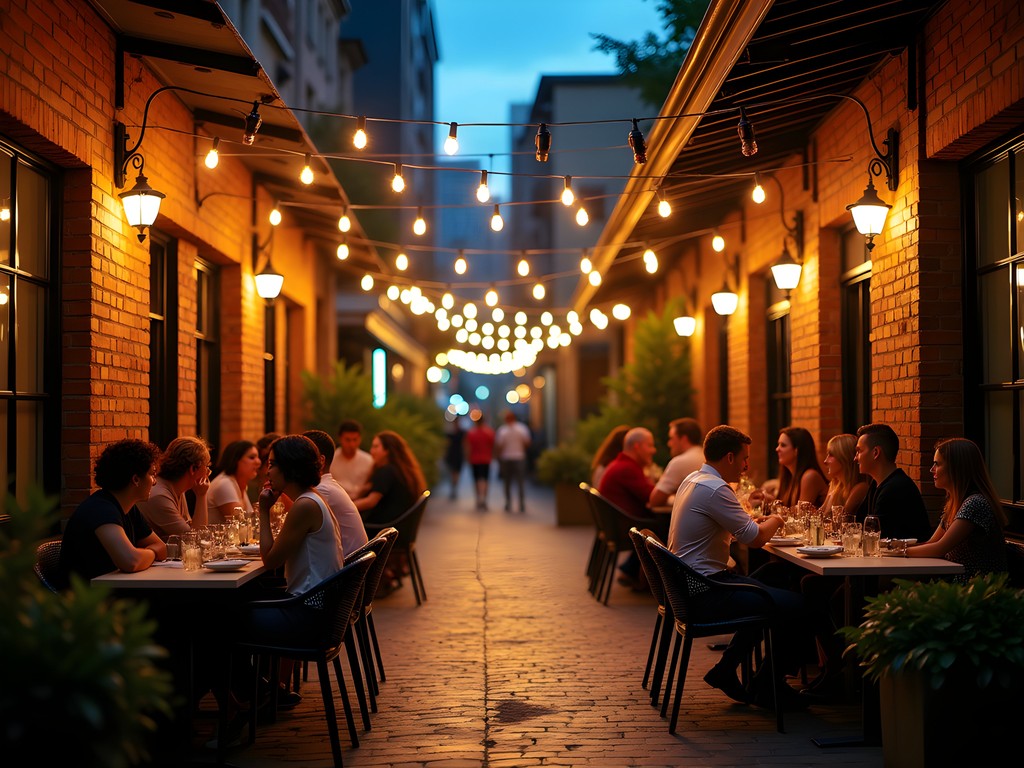
💡 Pro Tips
- Look for venues that list their producers and suppliers—they typically offer the most interesting food
- Many of Brisbane's best restaurants offer more affordable lunch menus or early evening specials
- Don't be deterred by humble appearances—some of the city's culinary treasures look unassuming from outside
Cultural Fusion: Brisbane's Multicultural Food Landscape
Brisbane's position as a gateway to the Asia-Pacific region has shaped its culinary identity in fascinating ways. As someone who's conducted environmental research across multiple continents, I'm particularly attuned to how geography influences food culture. Brisbane exemplifies this connection beautifully.
West End, with its long history of Greek, Vietnamese and Lebanese communities, offers an edible tour of global cuisines. At Lefkas Taverna, a family-run Greek establishment celebrating its 45th year, I enjoyed dishes that haven't changed in decades. The owner proudly showed me photos of three generations working in the same kitchen—a reminder that food heritage is as worthy of preservation as natural heritage.
Sunnybank, in Brisbane's southern suburbs, is essentially a Little Asia. Though it requires a 20-minute train journey from the city center, it's an essential pilgrimage for food enthusiasts. The Market Square complex houses dozens of specialized eateries representing regional Chinese, Korean, Vietnamese, and Japanese traditions. I spent a happy afternoon sampling xiao long bao (soup dumplings) that rivaled those I've had in Shanghai, followed by Korean fried chicken and Japanese soufflé pancakes.
What impressed me most was how these traditions are evolving in Australian soil. Visionary chefs are creating distinctive fusion cuisines that reflect Brisbane's unique position. At Same Same in Ada Lane, Thai flavors meet Australian ingredients with stunning results. Their bug meat (local moreton bay bug, similar to lobster) curry incorporated indigenous herbs that created flavor combinations I'd never encountered before.
For those with dietary restrictions, Brisbane offers excellent options. As someone who tries to minimize my environmental footprint through reduced meat consumption, I was delighted by Grown in West End—a plant-based restaurant where local, seasonal vegetables take center stage without relying on processed meat substitutes. Their commitment to regenerative farming practices aligns perfectly with sustainable food systems I've studied professionally.
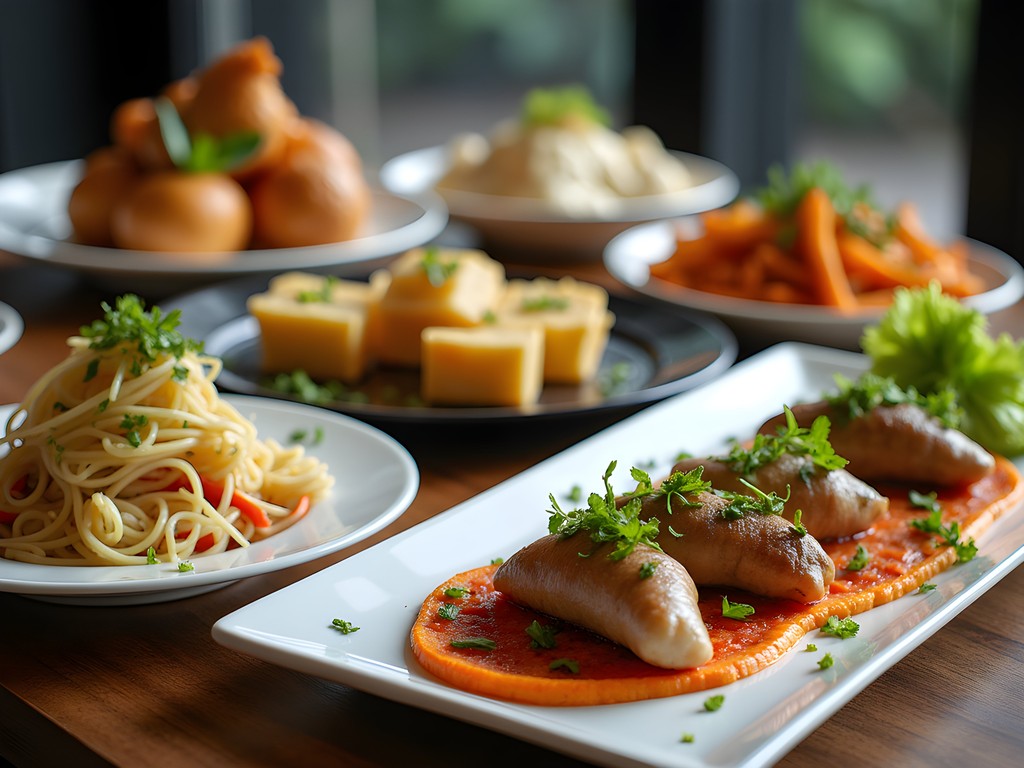
💡 Pro Tips
- Use Brisbane's excellent public transport to explore suburban food enclaves like Sunnybank and Moorooka
- Look for restaurants displaying the 'Responsible Cafes' logo—they offer discounts for bringing reusable cups
- Ask servers about unusual ingredients—many restaurants use native foods that staff are happy to explain
Sustainable Sipping: Brisbane's Craft Beverage Revolution
No culinary exploration would be complete without investigating the liquid side of the equation. Brisbane's beverage scene has undergone a transformation as remarkable as its food landscape, with sustainability increasingly at its core.
The craft beer movement has taken firm hold in Brisbane, with local breweries emphasizing both flavor innovation and environmental responsibility. At Green Beacon in Teneriffe—a former industrial area now buzzing with creative energy—I toured their operation where spent grain is sent to local farms for livestock feed, creating a circular economy that would make any environmental scientist smile. Their Wayfarer American Wheat Beer, infused with local citrus, perfectly captured Brisbane's subtropical essence.
Queensland's wine industry is less known internationally than those of South Australia or Victoria, but Brisbane offers excellent opportunities to explore these regional varieties. At City Winery—Brisbane's first urban winery—I participated in a tasting flight featuring wines from the nearby Granite Belt region. The winemaker explained how climate change is affecting their industry, a sobering discussion that connected directly to my professional work.
Perhaps most exciting is Brisbane's emerging native botanical movement. At Proof BBQ & Booze, the bartender created a cocktail incorporating wattleseed-infused bourbon and bush tomato that provided a uniquely Australian flavor profile I'd never experienced. Similarly, Alba Bar & Deli in Burnett Lane offers vermouths infused with native ingredients like lemon myrtle and pepperberry.
For coffee enthusiasts, Brisbane rivals Melbourne with its sophisticated cafe culture. The city's best roasters, like Bear Bones Espresso and Coffee Supreme, emphasize direct trade relationships with growers and sustainable production methods. As someone who starts each day with carefully brewed coffee—whether at home in Henderson or while traveling—I appreciated Brisbane's commitment to quality and ethics in equal measure.
During my beverage explorations, my insulated tumbler proved invaluable. Many Brisbane cafes offer discounts for bringing your own cup, and this tumbler kept my coffee hot during morning walks along the river. It's a small gesture toward sustainability that aligns with the values I observed throughout Brisbane's food scene.
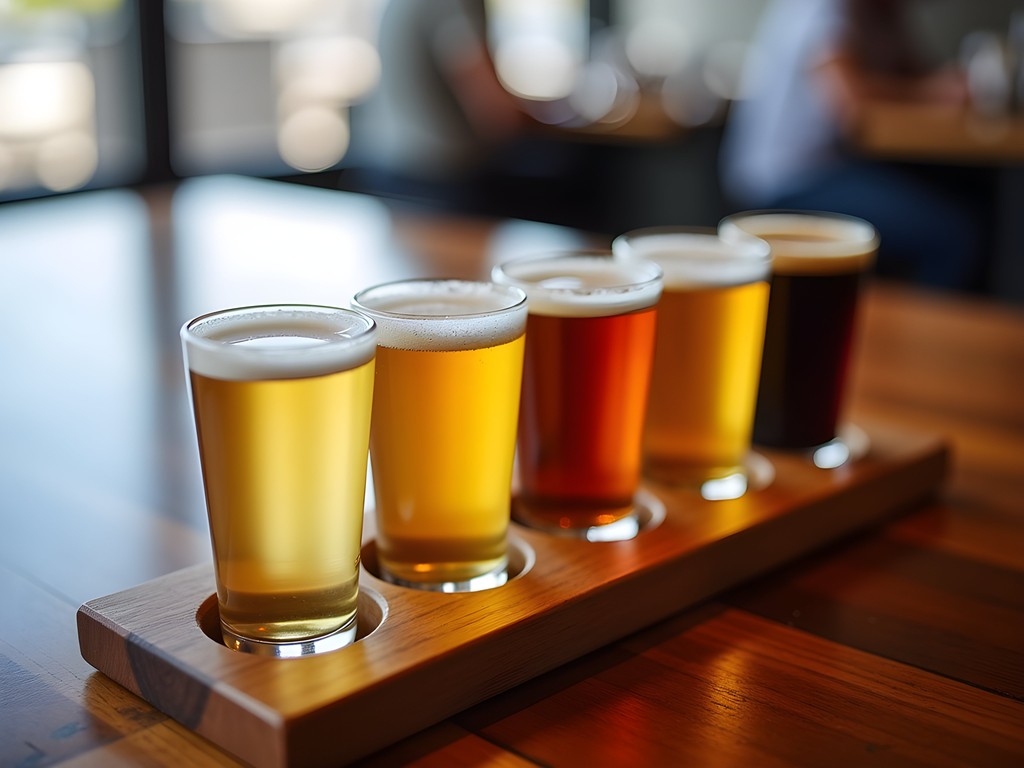
💡 Pro Tips
- Many Brisbane breweries offer tasting paddles—perfect for sampling multiple styles without overindulging
- Ask about 'low intervention' wines at restaurants—Australia has a growing natural wine movement
- Look for cocktails featuring native Australian ingredients for truly unique flavor experiences
Final Thoughts
Brisbane's culinary scene embodies the city itself—unpretentious yet sophisticated, deeply connected to its environment, and constantly evolving. What impressed me most wasn't just the quality of the food and drink (though that was consistently excellent), but the growing commitment to sustainability that parallels my own professional values. From riverside fine dining to hidden laneway gems, Brisbane offers a gastronomic journey that rivals its better-known southern counterparts while maintaining its distinct Queensland character. As I flew back to Nevada, my notebook filled with culinary discoveries and my camera roll bursting with food photos, I found myself already planning a return visit. Perhaps next time I'll combine it with a Brisbane Heat baseball game—the perfect marriage of my sporting passion and newfound appreciation for this city's remarkable food culture. Whether you're a dedicated foodie or simply someone who appreciates thoughtful, place-based cuisine, Brisbane deserves a prominent spot on your Australian itinerary.
✨ Key Takeaways
- Brisbane's food scene combines sophisticated techniques with laid-back Queensland atmosphere
- The city excels at incorporating native Australian ingredients into both traditional and innovative dishes
- Sustainability is increasingly central to Brisbane's culinary identity
- Multicultural influences create a diverse and constantly evolving food landscape
- Some of the best dining experiences are found in unexpected locations like laneways and suburban enclaves
📋 Practical Information
Best Time to Visit
year-round (though September-November offers ideal weather)
Budget Estimate
$75-150 AUD per day for food and drinks
Recommended Duration
weekend (3-4 days)
Difficulty Level
Beginner

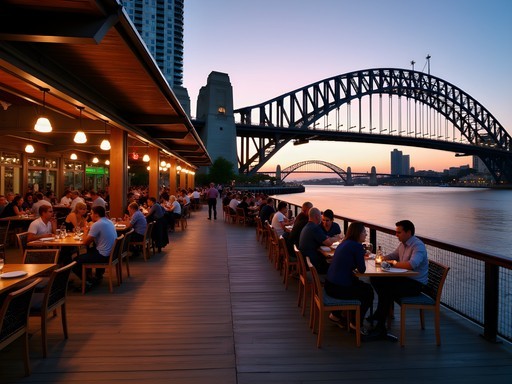



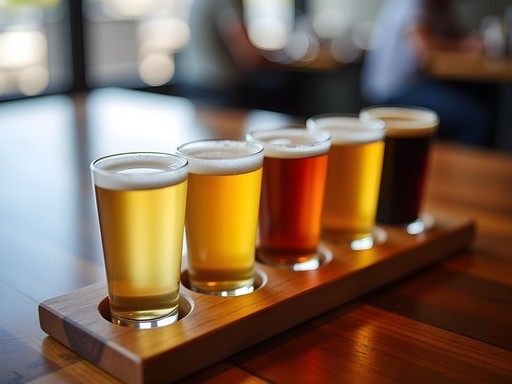



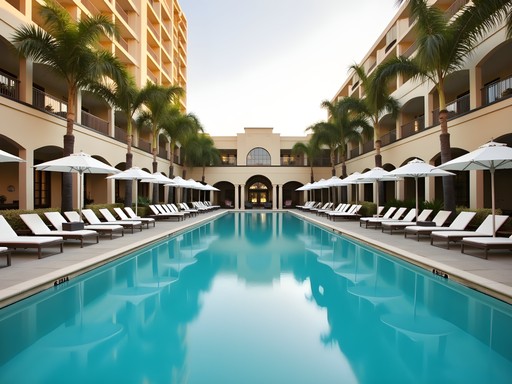

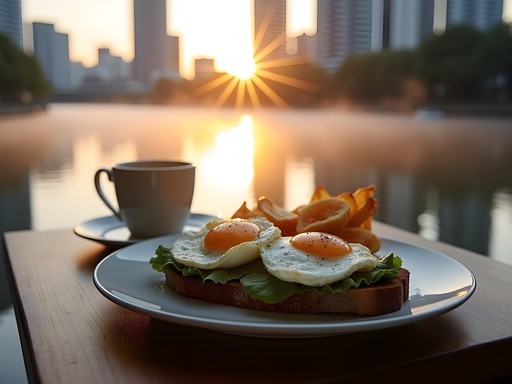


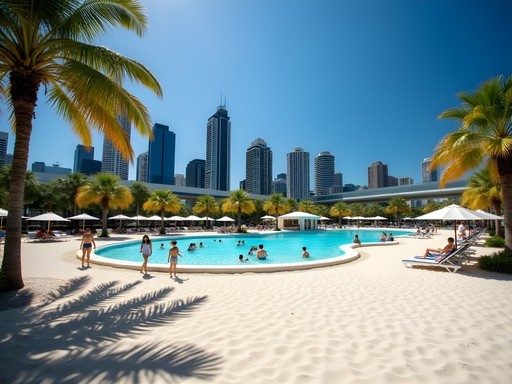

Comments
sunnyguy
Great post! Those food pics are making me hungry. Brisbane wasn't even on my radar before.
springqueen
Has anyone tried that underground Japanese place mentioned in the Hidden Gems section? Worth the splurge?
nomadmate
Bird's Nest Yakitori? Absolutely worth it. Get the chef's selection and thank me later!
George Hayes
This post brought back such memories of our family trip to Brisbane last year! We stumbled upon the exact culinary renaissance Ryan describes. Our kids still talk about the breakfast we had at a little place in Fish Lane (can't remember the name - it had amazing avocado toast with native herbs). What really made our experience special was taking a cooking class in Fortitude Valley where the chef taught us about indigenous ingredients. My 10-year-old was fascinated by finger limes and wattleseed! We found the riverside restaurants to be surprisingly family-friendly too, especially around South Bank. Ryan, did you try any of the food trucks that gather at Eat Street Northshore? That was our family's favorite night - such a festival atmosphere with all those shipping containers transformed into mini-restaurants!
oceanguide
Just booked my trip to Brisbane for November after reading this!! So excited to check out those laneway restaurants you mentioned. Anyone know if November is a good time for the farmers markets? I'm bringing my food tour journal to document everything!
George Hayes
November is perfect for the markets! The Davies Park Market in West End (Saturdays) will have amazing seasonal produce then. The mangoes will be coming into season - don't miss them!
Sarah Powell
Ryan, your observation about Brisbane's culinary evolution mirrors my own experience. I visited in 2005 and again in 2023, and the transformation is remarkable. The integration of sustainability practices in the riverside establishments particularly impressed me. I spent an evening at Howard Smith Wharves and was struck by how they've balanced upscale dining with environmental consciousness. The multicultural food landscape section of your article resonated with me as well - the Vietnamese influences in West End provided some of the most authentic flavors I've experienced outside of Vietnam itself. Did you notice how many of the chefs are emphasizing native Australian ingredients in unexpected ways?
springqueen
Sarah - which restaurant at Howard Smith Wharves would you recommend for someone with dietary restrictions? Heading there next month!
Sarah Powell
Springqueen - Greca was incredibly accommodating with my gluten-free needs. Their menu is clearly marked and the staff are knowledgeable. The riverside setting is stunning too!
nomadmate
Wow, Brisbane's come a long way! Was there in 2010 and the food scene was pretty basic. Need to revisit!
Sarah Powell
It really has transformed! I was there last year and the riverside dining scene alone is worth the trip. The farm-to-table movement has really taken hold.
islandbackpacker
Been living in Brisbane for 6 months and this post nails it. The food scene here really is underrated! For anyone visiting, don't miss the smaller spots in Newstead - the industrial area has some amazing converted warehouses with fantastic restaurants. Sono in Hamilton for Japanese is worth every penny. And if you're here on a Sunday, the Brisbane Powerhouse farmers market is less crowded than Davies Park but just as good. The coffee culture here rivals Melbourne too - my morning routine is grabbing a flat white from John Mills Himself, hidden down a CBD laneway. Brisbane's becoming a proper foodie city without the pretentiousness.
citymaster
Just booked tickets to Brisbane because of this post! Can't wait to try those riverside restaurants!
exploreseeker
How's the pricing in Brisbane compared to Sydney or Melbourne? Planning a trip but worried about food costs!
Gregory Boyd
Generally found Brisbane about 15-20% cheaper than Sydney for comparable dining experiences. The markets are particularly good value - you can eat extremely well at Eat Street for under $30.
Nicole Russell
Ryan, this post couldn't be more timely! Just got back from Brisbane and was BLOWN AWAY by how much it's changed. The multicultural food scene especially deserves all the hype - I spent three days just exploring West End's global eateries. Shout out to Montrachet for the best French dining experience I've had outside of Paris! And the Davies Park Market on Saturday morning was such a vibe - picked up some amazing local honey and macadamias. Brisbane really does feel like Australia's most underrated food city. I documented everything in my travel journal which was perfect for mapping out all the foodie spots across neighborhoods!
Venture X
Premium card with 2X miles, $300 travel credit, Priority Pass